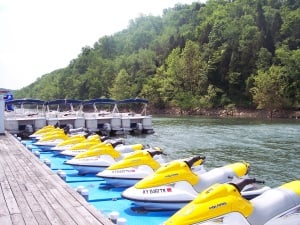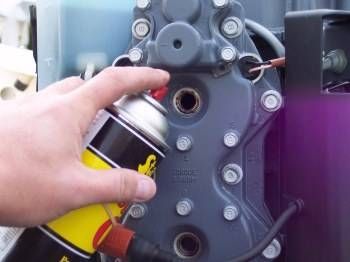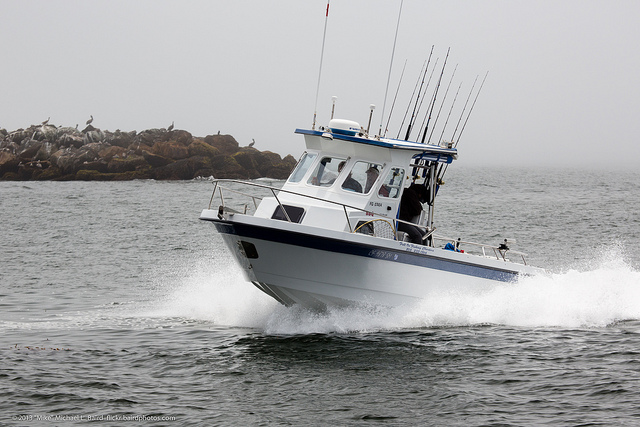Packing It Up: Part II - Winterizing Inboard Boat Motors
Now that Labor Day has passed, boating season is coming to an end while cold weather looms on the horizon. The engine is the most expensive part of...

 Unless you live in Florida, chances are you’re not going to be doing a lot of boating during the winter. And that goes double for personal watercraft like jet skis and Sea Doos. Before you put them away for the winter, you want to do a few things to make sure that it’s protected during the cold weather months and ready to give you maximum fun when you break it back out during the spring.
Unless you live in Florida, chances are you’re not going to be doing a lot of boating during the winter. And that goes double for personal watercraft like jet skis and Sea Doos. Before you put them away for the winter, you want to do a few things to make sure that it’s protected during the cold weather months and ready to give you maximum fun when you break it back out during the spring.
The easy route is to take it in to a professional shop and let them do the work. But if you want to save a little bit of money, there are lots of important steps you can do yourself when winterizing a jet ski. Remember, these are general guidelines and your watercraft manufacturer may have other recommendations it wants you to follow. You should always follow your manufacturer’s instructions. In the absence of those, try these suggested steps.
Washing the hull and engine compartment will take off dirt and salt that may have been left from use (salt, obviously, only if you’ve been tooling around in salt water). And removing as much water as possible from all parts of the machine will prevent condensation and corrosion. You should pull the drain plug to help remove all water from the hull.
Use of your watercraft in salt water leads to potential internal engine corrosion. Winterizing should involve mitigating this potential with a cooling system flush. You can and should get specific flush products to use that will neutralize and protect against the presence of salt in the cooling system.
Since you’re going to be leaving fuel in the craft’s tank, it’s advisable to put a stabilizing treatment in the fuel to make sure its quality is protected in the months you’ll be storing the machine. This is especially important if you’re forced to use ethanol fuel. In treating ethanol blends, be sure that whatever treatment you use contains no alcohol in the formulation.
At this point, a best practice is to use a marine-grade fogging oil. Start up the engine and spray the oil into the carburetor. Run the engine for about 10-15 seconds before shutting it down. Another benefit to doing this is that you’ll be circulating the newly-stabilized fuel throughout the engine. After you’ve shut the engine down, turn the fuel switch to the Off position.
Apply grease to all the fittings after removing the driveline cover. Re-install the cover after you are finished.
Sea Doos require a little bit of extra attention, one extra step being to change the pump oil. Some Sea Doo owners will change it in the spring, but that means that any water that entered the pump oil is sitting there all winter, ruining the pump bearings. Changing the pump oil is a multistep process that has been covered in other places besides here. In case you need specifics, we’ve linked a page of web pages and resources to advise you how to do it.
For the rest of us that don’t have Sea Doos, the next step is to put antifreeze in the cooling system. Doing so is relatively simple – you disconnect the water in-line, connect a hose with a funnel, and pour in antifreeze until it comes out of the outlet of the cooling system.
The major work is now done. To finish the job, spend a little time lubing the cables and the steering system. Use a silicon spray lube to do this. And spray down your engine with spray lube as well, but not too much – you only need a light coating.
One final set of steps to consider have to do with making sure your jet ski doesn’t get stolen. Bell’s home state of Florida leads the nation in watercraft thefts (1,700 a year), but even an average state like Pennsylvania reports almost 100 thefts per year. If you don’t have the option to store your watercraft inside a secure location, take the tires off your boat trailer and put them in a garage. If your trailer has tires that won’t come off, park it facing away from the street and use a heavy-duty lock.

Now that Labor Day has passed, boating season is coming to an end while cold weather looms on the horizon. The engine is the most expensive part of...

Now that Labor Day has passed, boating season is coming to an end while cold weather looms on the horizon. The engine is the most expensive part of...

De-winterizing your boat should take no time at all if you properly prepared it before you stowed it away for the cold weather months. Even boats...